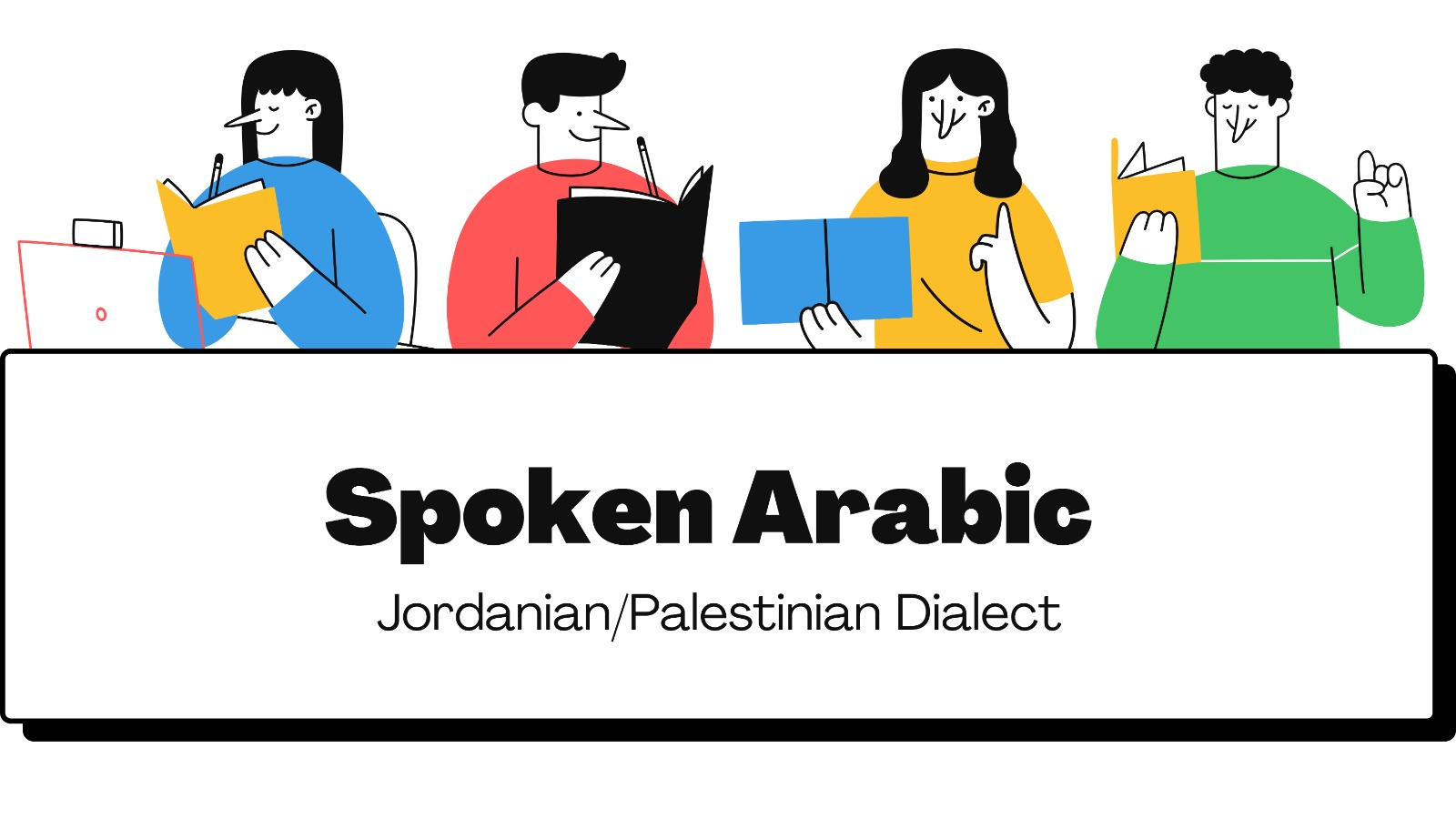
About Course
Master Jordanian & Palestinian Spoken Arabic from the alphabet to A1/A2 conversational level through 7 self-paced modules and 7 live 1:1 speaking sessions. Step by step, you’ll build vocabulary, grammar, and cultural knowledge while practicing real conversation.
What you will learn:
-
Alphabet & Pronunciation: Arabic script, letter sounds, long/short vowels, and numbers 1–10
-
Hello & Greetings: Introductions, countries, nationalities, feelings, pronouns, sentence structure, and numbers up to 99
-
My School: Classroom vocabulary, feminine forms, plurals, demonstratives, adjectives, and “there is/there isn’t”
-
My Family: Family member vocabulary, possessive pronouns, “I have,” professions, and question words
-
My Hometown: Rooms, house objects, city places, prepositions, adverbs of place, and counting 100+
-
Bon Appétit: Food, groceries, containers, adjectives, meals, polite ordering, and money & prices
-
My Routine: Daily activities, present tense with أنا, days of the week, time expressions, transportation, telling time, and two-verb constructions
By the end of this course, you’ll be able to read and write basic Arabic and hold everyday conversations confidently in Jordanian and Palestinian spoken Arabic.
Course Content
Module 1: The Alphabet
-
-
-
Lesson 3: Letters Group ( ب ت ث )
-
Flashcards ب ت ث
-
Lesson 4: Letters Group ( ج ح خ )
-
Flashcards ج ح خ
-
Lesson 5: Letters Group ( ة ـة )
-
Flashcards ة ـة
-
Lesson 6: Letters Group ( د ذ )
-
Flashcards د ذ
-
Lesson 7: Letters Group ( ء أ )
-
Flashcards أ ء
-
Lesson 8: Letters Group ( رز )
-
Flashcards ر ز
-
Lesson 9: Letters Group ( س ش )
-
Flashcards س ش
-
Lesson 10: Letters Group ( ص ض )
-
Flashcards ص ض
-
Lesson 11: Letters Group ( ط ظ )
-
Flashcards ط ظ
-
Lesson 12: Letters Group ( ع غ )
-
Flashcards ع غ
-
Lesson 13: Letters Group ( ف ق )
-
Flashcards ف ق
-
Lesson 14: Letters Group ( ك ل )
-
Flashcards ك ل
-
Lesson 15: Letters Group ( م ن هـ )
-
Flashcards م ن هـ
-
Lesson 16: Numbers 1-10
-
Lesson 17: Fun with Arabic Letters
-
Live 1:1 speaking session
Module 2: Hello
Module 3: School
Module 4: Family
Module 5: Hometown
Module 6: Bon Appetit
Module 7: Routine
Test
Student Ratings & Reviews

